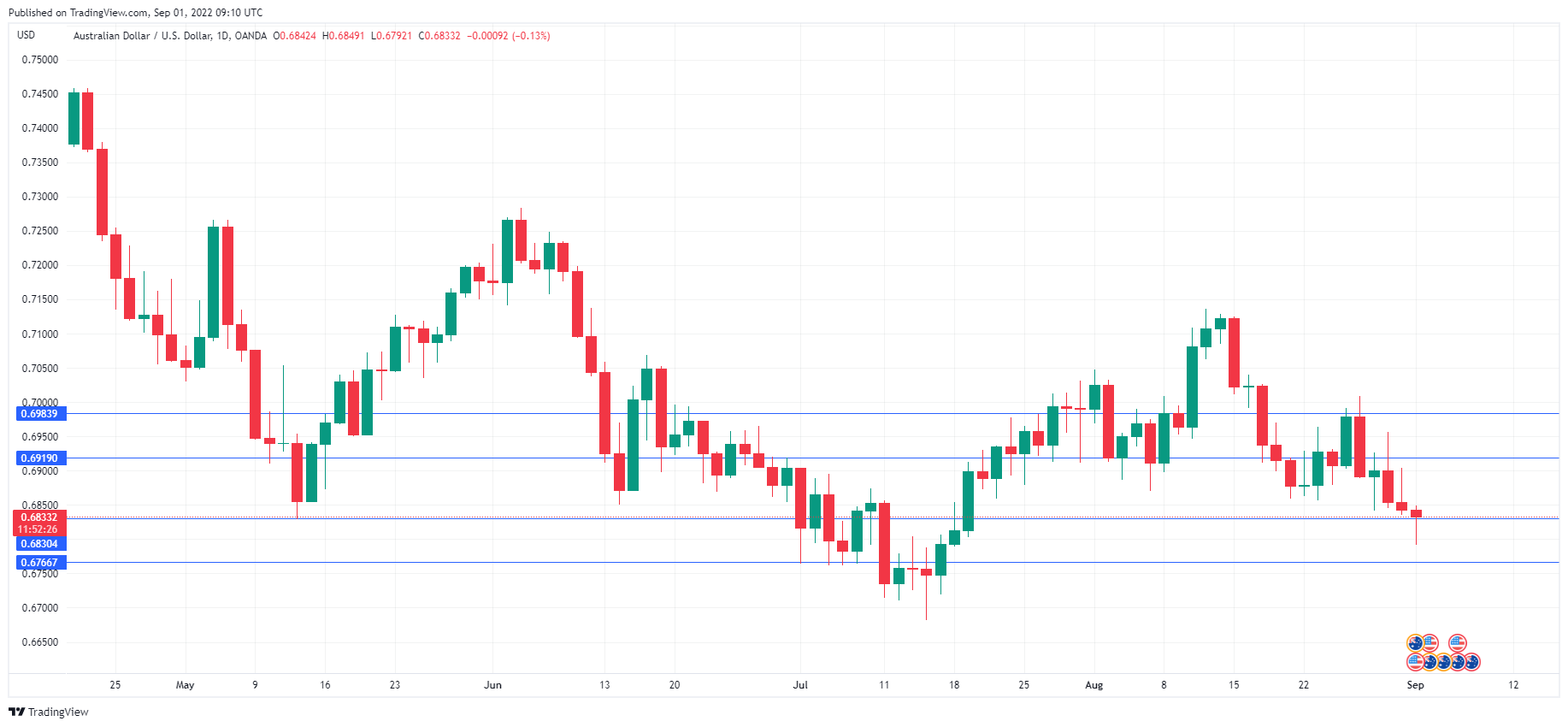The Australian dollar is showing limited movement today. In the European session, AUD/USD is trading at 0.6835, down 0.10%.
Australian Capex falls for a second successive quarter
Australian Private Capital Expenditure disappointed in Q2, with a reading of -0.3% (vs -0.3% in Q1), well below the forecast of 1.5%. This follows weak construction data on Tuesday, as Construction Work Done posted a second straight decline, coming in at -3.8% in Q2. These numbers are a further indication that the Australian economy is slowing down, as a weak global economy and higher interest rates have dampened economic activity.
The Australian dollar has not reacted to these weak releases, as the currency is much more sensitive to global developments than internal data. The war in Ukraine has raised the price of energy and food imports for Australians and caused high inflation. As well, risk appetite has been dampened, and AUD/USD has tumbled about 650 points since the Russian invasion of Ukraine.
Additionally, the Federal Reserve continues to tighten policy, and this has boosted the US dollar over the past few months. With Fed Chair Powell delivering a “read my lips” speech at Jackson Hole, pledging to continue raising rates, there is room for the Australian dollar to continue to lose ground.
The RBA meets next on September 6. In all likelihood, the RBA will deliver a 0.50% increase, as inflation hasn’t shown any signs of peaking. In the second quarter, inflation rose to 6.1%, up from 5.1% in Q1. Policy makers are hoping to avoid a recession and guide the economy to a soft landing, but the central bank, like the Fed, has made clear that its paramount goal is to curb inflation and avoid inflation expectations from becoming anchored.
Investors will be keeping a close eye on US nonfarm payrolls on Friday. The markets are expecting a strong gain of 300,000 for August, after the massive 528,000 gain in July. A strong NFP will provide support to the Fed’s plans to remain aggressive and should boost the US dollar. Conversely, a weak reading will raise speculation that the Fed will have to ease up and the US dollar could react with losses.
AUD/USD Technical
- There is resistance at 0.6919, followed by resistance at 0.6983
- 0.6830 is providing support, followed by 0.6766


